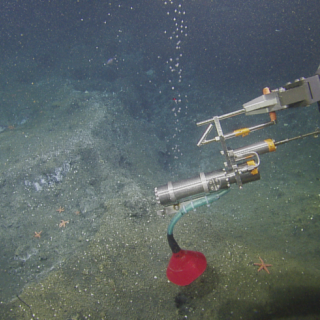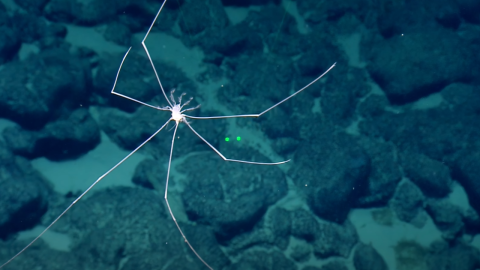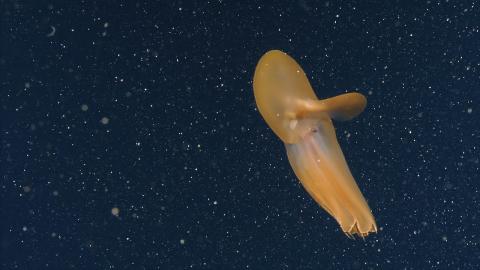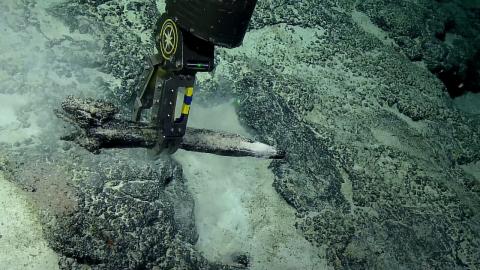Swarmed by Sablefish
Why are methane seeps important? We’ll give you a hint: it’s not just for the gases they emit.
The survival of many deep-sea organisms relies on the unique habitat methane seeps provide. Take this “cloud” of sablefish the E/V Nautilus team saw while exploring at a depth of about 571 meters (1873 feet) along Carbonate Ridge near Cascadia Margin. Sablefish is a species of great economic importance to coastal communities in Washington, Oregon, and northern California. Understanding their habitat helps those ashore to better protect it, ensuring the viability of future stocks for generations who will one day rely on these deep-sea fish.
“Even if we don’t have that whole dotted line to connect what it is about this environment in particular — maybe it is the abundance of food here, maybe there is a particular prey group that they come here to find or use the rugosity of the habitat for a part of their life history,” said Corps of Exploration member Megan Cook.
“We can connect that methane seeps and this commercial fishery are obviously linked.”
Often referred to as “black cod,” sablefish are found in the northeastern Pacific Ocean from northern Mexico to the Gulf of Alaska. These deep-dwelling fish spawn along the continental slope before heading to shallower waters to complete their younger stages.
Fun fact: not only can sablefish live to be more than 90 years old but juveniles have been found to migrate more than 2,000 years in just seven years!

Cascadia Margin Seep Exploration
For two weeks, E/V Nautilus will return to the Cascadia Margin, a geologically active region located offshore of Washington, Oregon, and northern California, where we have mapped and explored many methane seeps and cold seeps.



